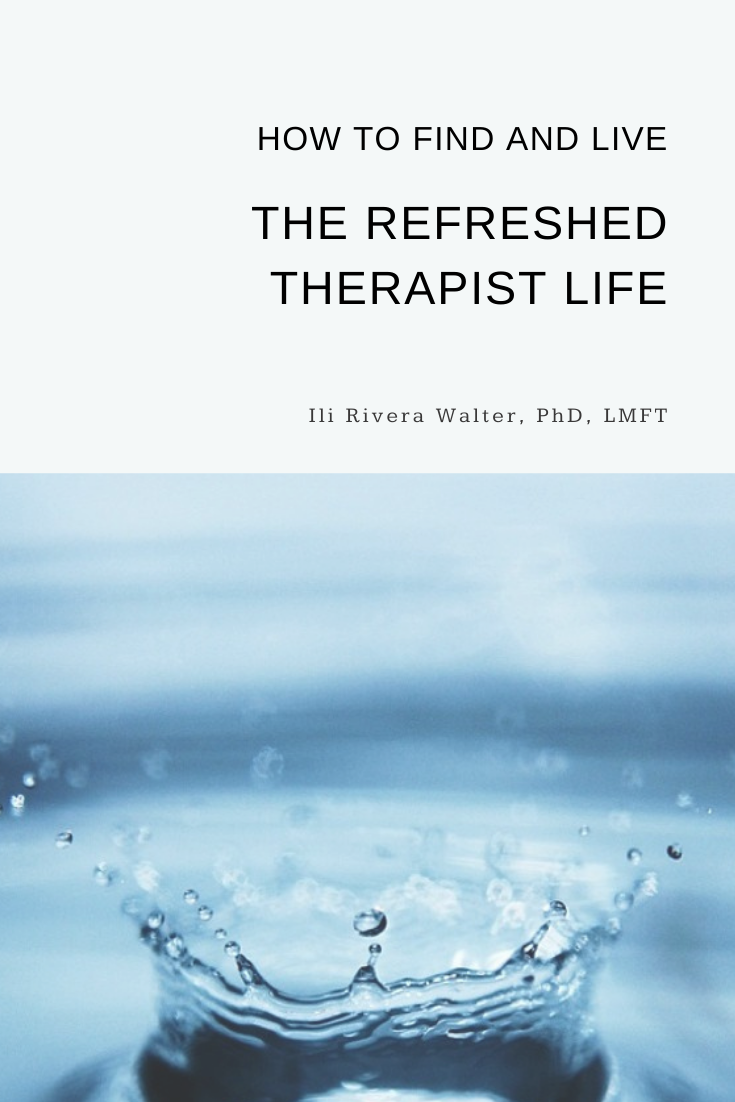In March, I collaborated with Alison Crosthwait on a post titled, Self Care: 4 Signs It’s Time to Take Care of Yourself. In the post, Alison alerted us to four signs it’s time to tune in; they include consistently feeling overwhelmed, bored, irritated, or tired.
After I published the post, a follower on Instagram suggested I write a follow-up to the post on “what to do when you notice those signs.” This post is the follow-up.
Rather than listing “to dos,” I’m giving you a process for how to take care of yourself any time you need a break from busyness or a way to combat burnout. I implemented this idea naturally, as a way to process a distressing event, when I was a young adult. And, I’ve come back to it again and again.
Originally, my respites were longer than 30 days--I remained in a respite until I felt ready to venture out once again. Eventually, 30 days became the length of my average respite. You may find that a weekend, or a one week respite is enough for you.
I am also an introvert, and this is reflected in the way that I practice my respite. If you are an extrovert, in order to restore and re-energize, you may need to concentrate on meaningful social gatherings during your respite. Please take this idea and adapt it to what will work best for you.
The Purpose
The purpose of the personal respite is to give yourself time and space to rest and re-energize (however that looks for you). In addition to needing a respite due to work-related exhaustion, respites can also help you get through periods of grief and personal crisis. In short, the purpose of the respite is to put yourself first, for a time.
Here are the main components of the respite:
1| Rest
As is clear in the definition of the word respite, the focus of this time is to allow yourself to feel relief from whatever is causing you exhaustion or distress. Inherent in relief, is the letting go of burdens, which implies lightness and an opportunity for relaxation.
Therapists often ask me what it means when they’ve lost interest in activities that once energized or were deeply meaningful to them, such as exercise or weekly worship. I can’t speak to what this means for each individual, but in general, I believe it is an indication that it’s time to rest. This means getting enough sleep each night, as well as creating a simplified schedule that allows for reflection.
2| Simplify your schedule
Eliminate non-essentials from your schedule, so that you can spend time listening to what you know about what you need. During one of my respites, part of my ritual was to go to a bookstore every Friday night, choose a book to read, and sit in a comfy chair with a cup of coffee. You are free to set restful rituals that work for you.
Within reason, stop doing things you don’t want to do for this period of time, but also minimize or avoid responsibilities that are not in service to your respite. Allow for “white space” in your schedule in order to fill it with activities that are restorative.
3| Reflect
Essential in a respite is taking time to reflect on events that led to your exhaustion as well as ways to move forward that incorporate mini-respites, when needed. Some questions to ask yourself, include:
How have you been feeling (identify feelings)?
For how long?
What led you to this place of exhaustion (activities, decisions, responsibilities, etc.)?
What are the first signs evident in your behavior that indicate you need to rest? (tip: If you can’t answer this, ask someone who lives with you.)
What can you do to rest and refocus when these signs start to appear?
Reflect on what seems relevant to you during your respite, as well as what your respite reveals about the best ways to move out of your respite and into a regular schedule.
Preparation: The Key to A Successful Respite
Of course, in order to be able to surrender to this restful practice, you need support and preparation. Prepare for for a successful respite by doing the following before you begin:
Set boundaries for people and activities.
Block times in your calendar for the respite.
Consider restorative practices you may want to incorporate during the respite; schedule them.
Catch up on extra work, or work ahead, so that you are not worried about things “piling up.”
In addition, ask for support. In order to live this way for a time, those around you will need to understand and partner with you for your success. Inform your significant others of your need for rest as well as your plan. Ask specifically for what you need, such as supportive and affirming comments, grace regarding household chores, a financial plan if what you need is to cut back on work hours, etc.
Make sure those involved in supporting you know that your respite will be for a specific amount of time. This will encourage them to stay the course with you.
Summary Download: Respite Plan + Checklist
Let's Chat
What are your thoughts on the personal respite?













